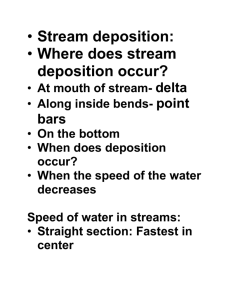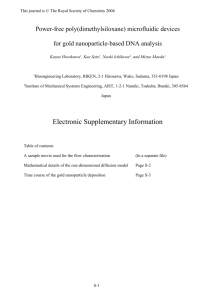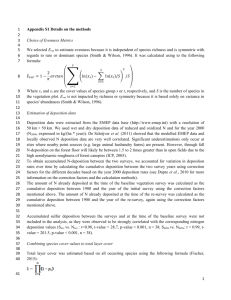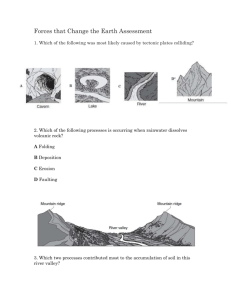Word document
advertisement
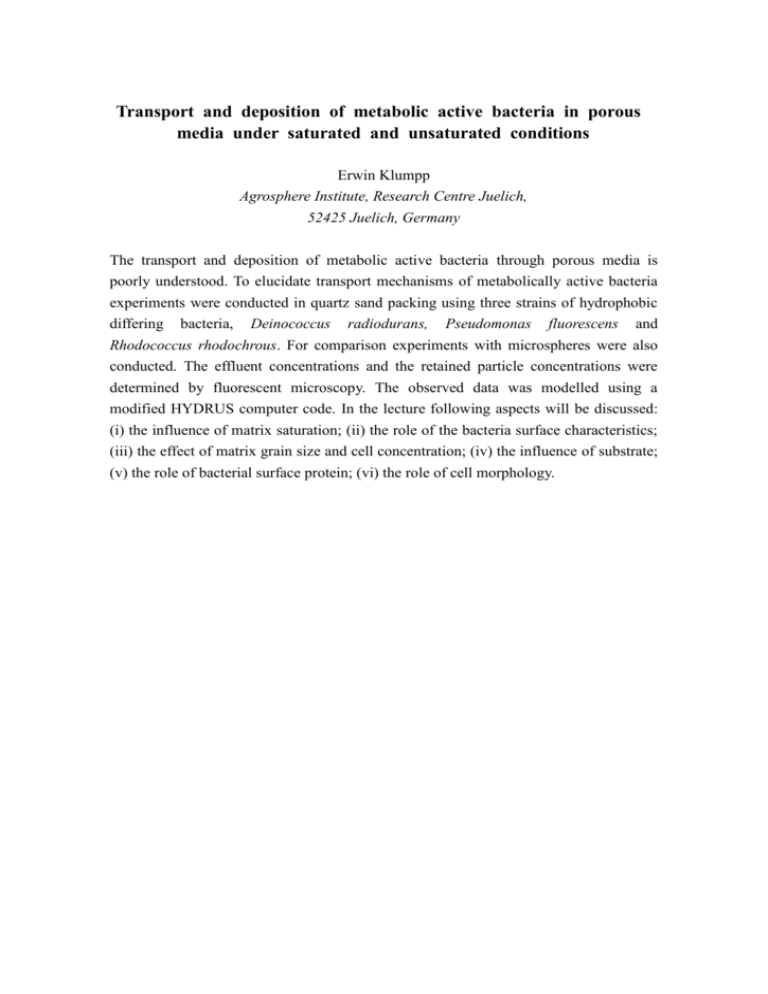
Transport and deposition of metabolic active bacteria in porous media under saturated and unsaturated conditions Erwin Klumpp Agrosphere Institute, Research Centre Juelich, 52425 Juelich, Germany The transport and deposition of metabolic active bacteria through porous media is poorly understood. To elucidate transport mechanisms of metabolically active bacteria experiments were conducted in quartz sand packing using three strains of hydrophobic differing bacteria, Deinococcus radiodurans, Pseudomonas fluorescens and Rhodococcus rhodochrous. For comparison experiments with microspheres were also conducted. The effluent concentrations and the retained particle concentrations were determined by fluorescent microscopy. The observed data was modelled using a modified HYDRUS computer code. In the lecture following aspects will be discussed: (i) the influence of matrix saturation; (ii) the role of the bacteria surface characteristics; (iii) the effect of matrix grain size and cell concentration; (iv) the influence of substrate; (v) the role of bacterial surface protein; (vi) the role of cell morphology. Adhesion of Motile and Non-Motile Bacteria onto Conditioning Films Menachem Elimelech Department of Chemical Engineering Environmental Engineering Program Yale University Understanding of the transport and deposition of microorganisms in engineered and natural aquatic environments remains an important challenge due to the complexity of these systems. This presentation delineates the importance of bacterial flagella and substrate conditioning films on cell deposition. A model alginate conditioning film and model flagellated (motile) and non-flagellated (non-motile) Pseudomonas aeruginosa strains were rigorously characterized for this research. Deposition kinetics experiments were conducted in a well-defined radial stagnation point flow chamber under controlled flow conditions and over a broad range of physicochemical conditions. Deposition kinetics of non-motile bacteria indicated that in monovalent salts the attachment efficiency of the cell to bare and conditioned quartz substrates was governed by electrostatic interactions. Observed bacterial deposition rates were much greater than those predicted by DLVO theory. The marked underpredictions of the attachment efficiencies onto conditioned substrates by the DLVO theory were attributed, in part, to irreversible deposition of cells trapped in the secondary energy minimum. In the presence of divalent cations, deposition of non-motile bacteria was enhanced by specific biological interactions. Deposition kinetics of motile bacteria demonstrated the importance of swimming motility on the transport and attachment of cells. Activation of the mechanisms involved in motility under optimal electrolyte conditions favored the transport of the cells and affected deposition dynamics. Low surface blocking and high maximum surface coverage were attributed to the ability of the cell to swim upstream and subsequently approach surface regions that are otherwise inaccessible to non-motile cells. Attachment of motile cells was demonstrated to depend on the activation of motility as well as on the conditioning film structure. Steric interactions between the flagella and the polymeric film were proposed to influence cell attachment. Because the designed system provides a more realistic approach to the complexity of natural and engineered aquatic systems, these findings have important implications for the control and prevention of bacterial deposition.




